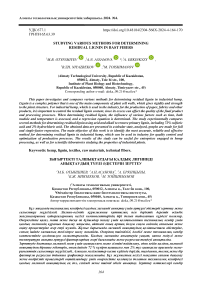Studying various methods for determining residual lignin in bast fibers
Автор: Otynshiyev M.B., Assanova A.N., Erkinkyzy A., Niyazbekov B.Zh., Toishimanov M.
Журнал: Вестник Алматинского технологического университета @vestnik-atu
Рубрика: Технология текстиля и одежды, дизайн
Статья в выпуске: 4 (146), 2024 года.
Бесплатный доступ
This paper investigates and compares various methods for determining residual lignin in industrial hemp. Lignin is a complex polymer that is one of the main components of plant cell walls, which gives rigidity and strength to the plant structure. For industrial hemp, which is used in the industry for the production of paper, fabrics and other products, it is important to control the residual lignin content, since its excess can affect the quality of the final product and processing processes. When determining residual lignin, the influence of various factors such as time, bath module and temperature is assessed, and a regression equation is determined. The study experimentally compares several methods for determining residual lignin using acid and alkali to remove primary lignin, including 72% sulfuric acid and 2% hydrochloric acid. The obtained data are presented in a tabular state, analyzed, graphs are made for full and single-factor regression. The main objective of this work is to identify the most accurate, reliable and effective method for determining residual lignin in industrial hemp, which can be used in industry for quality control and optimization of production processes. The results of the study can be useful for enterprises engaged in hemp processing, as well as for scientific laboratories studying the properties of industrial plants.
Hemp, lignin, textiles, raw materials, technical fibers
Короткий адрес: https://sciup.org/140308686
IDR: 140308686 | УДК: 677.1 | DOI: 10.48184/2304-568X-2024-4-164-170
Текст научной статьи Studying various methods for determining residual lignin in bast fibers
Lignin is one of the main components of plant cell walls, which gives the structure of plants rigidity and strength. It plays a key role in ensuring the mechanical stability of plants, as well as protecting them from destruction by microorganisms. However, in an industrial context, especially in the production of hemp, lignin may be an undesirable component, since its presence can make processing difficult and affect the quality of the final product [1]. Technical hemp, characterized by a low content of psychoactive compounds, is actively used in various industrial fields, including the pro-duction of textiles, paper, biocomposites and building materials. In these processes, excess lignin can complicate the processing of hemp fiber, reduce the quality of products, and increase production costs [2]. The deter-mination of residual lignin in industrial hemp is important for optimizing industrial pro-cesses, product quality control and improving environmental sustainability. However, there are currently many different methods for determining the lignin content, each of which has its own advantages and limitations. The purpose of this study is to review and com-pare various techniques for determining resi-dual lignin in industrial hemp. In the course of the study, chemical methods are considered, their accuracy, reproducibility and applicability in industrial production condi-tions are evaluated [3,4]. The study will also include an experimental analysis aimed at comparing the effectiveness of various met-hods, identifying possible sources of errors and determining the most reliable and accurate methodology for use in an industrial context. The results of this study will be of practical importance for enterprises engaged in the processing of cannabis, as well as for researchers studying the properties of industrial plants and developing new methods of their analysis [5].
Hemp is the most promising domestic vegetable raw material capable of fully replacing cotton and ensuring the strategic and financial independence of the country. Bast cellulose has a very high quality and can be used in the production of various grades of paper and other industrial products based on cellulose. At the same time, cannabis can be produced in various climatic zones of the country, including in regions where the cultivation of other crops is ineffective. Hemp fiber is long and coarse, but has good strength. Thus, these fibers are the strongest, most durable and strong among plant fibers and do not rot when exposed to water for a long time. [6,7]. Many products are made from hemp fiber, such as fabrics and canvases. tarpaulin, burlap, ropes, cords and valuable paper. Hemp fabrics are antimicrobial, antistatic and hygienic, can absorb up to 30% of sweat and 95% of ultraviolet rays. Hemp clothing is recom-mended for people prone to skin allergies, rheumatism and spinal diseases. The service life of clothing made from such materials is several times higher than that of their main competitors. Hemp materials are not only very dense, but they also do not stretch, while they can retain their shapes and proportions [8,9,10]. The porosity of the hemp fibers allows the fabric to absorb moisture better, and therefore color loss during washing is minimal. This allows the body to "breathe" during extreme heat while keeping cool. Hemp seeds contain about 30-35% oil, 20% starch, 18-23% protein, 15% fiber, 4-5%. The material made of hemp is very soft and durable, durable. With constant application, the qualities and properties of the fabric are enhanced.
The durability of the fabric is supported by the special structure of hemp fibers: - stable resistance to external influences;
-
- the material does not deform it also does not deteriorate when washing the 90С°;
-
- the material does not lose shape during use. With constant wear, hemp does not allow pathogenic viruses and micro-organisms to develop, and does not create conditions that interfere with metabolic processes in the skin. In addition, hemp fabrics gently interact with the skin, and are able to protect the skin from the harmful effects of the external environment, an unfavorable combination of temperature and humidity, heavy metal salts, and the negative effects of excessive ultraviolet radiation [11,12]. Ultraviolet radiation
is delayed by hemp fabric by almost 95%, whereas other fabrics are only 30-50%. Such fabrics possess the highest degree of durability and, when processed, can preserve useful and necessary, as well as valuable qualities of natural material. In the twentieth century, the production of industrial hemp declined. The persecution is related to the fight against the spread of drugs. In the last two decades, in the wake of the popularity of reasonable con-sumption and environmental friendliness, hemp fabrics have been gaining popularity. And flax and hemp are becoming the main raw materials for ecotextiles [13,14]. In most countries, decorative and technical cannabis of the Cannabis Sativa variety is allowed for cultivation. Fabric, yarn, building insulation, ropes are made from it. The processing and cultivation of cannabis does not harm nature. And the resulting fibers are hypoallergenic [15].
Materials and research methods
The following raw materials were used for testing. Cannabis variety: Santhica 70. Santhica 70 contains few CBD cannabinoids, and this "negative" characteristic limits its use in the production of light cannabis. The THC content is less than 0.6%, while the CBD cannabinoid content is zero. When growing outdoors, an annual mid-late cycle is used, and the yield per square meter is very high. Santhica 70 is a French variety, the production of which is aimed at obtaining fiber and seeds. Genotype: Annual. Climate adaptability: Central and Northern Europe. Growing season: 120 days. Height: 2.0 - 3.0 meters. Full bloom: July. [21] Place of cultivation: Kostanay region, Moscow region. The fiber of their stems was obtained in laboratory conditions at the Almaty Technological University
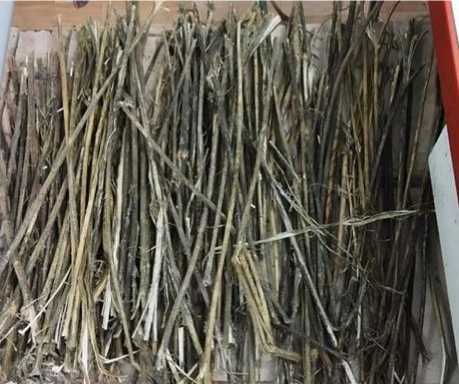
Figure 1. Hemp stem
The hemp stalks were dried for 2 months until a moisture content of 10-12% was reached. Then they were processed on a grinding line consisting of one grinding machine, one shaking machine. The 2,3 - figure shows the used equipment.
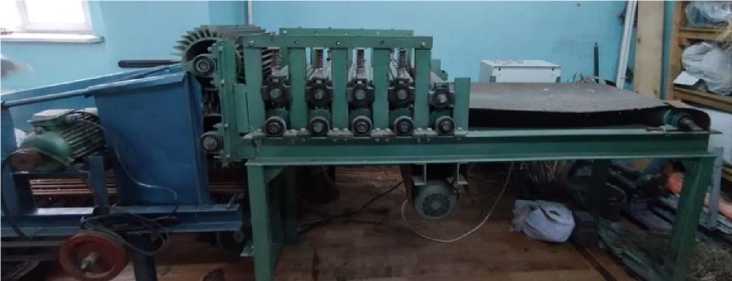
Figure 2. The grinding machinе
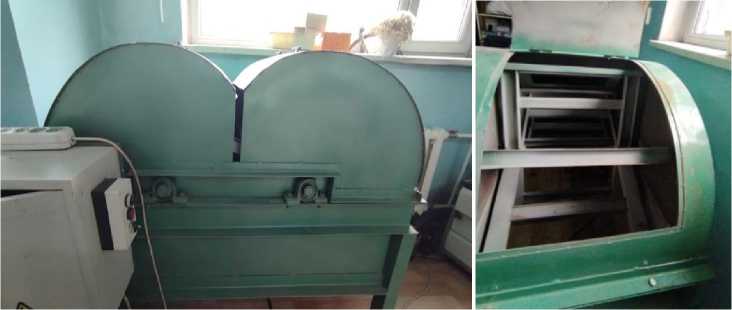
Figure 3. The loosening and shaking machine
The dissolution of lignin from cannabis is an important process that has several practical applications and purposes.
Lignin is the main component of lignocellulose plants, which gives strength and rigidity. To obtain pure cellulose, lignin must be removed.
To conduct a complete factor experiment to obtain a regression model of lignin removal, an apparatus was used, which in Figure 7 HG2009 is a coloring machine.
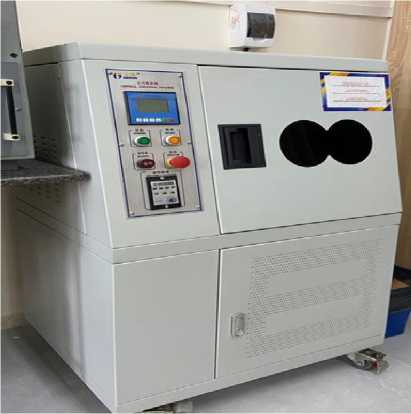
Figure 4. The coloring machine HG2009
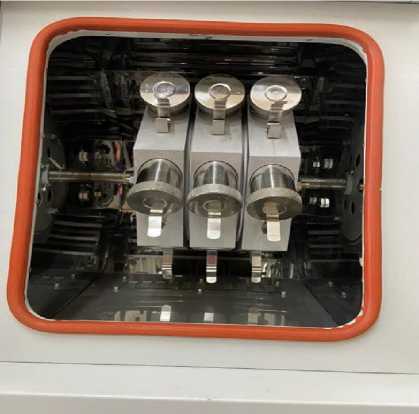
Sample Determination of the equation of the influence of temperature, time and modulus of fiber processing on the residual content of lignin. The process of removing lignin from hemp includes sulfonation and alkali treatment, where various treatment modes are used to study the effect of temperature on the effectiveness of delignification. The above processing mode provides for working with samples of different weights and under different temperature conditions. If we consider the process in more detail:
preparation
-
- Sample weight: 30 g.
-
- Module: 1:10, 1:15, 1:20.
-
- Time Sulfonation
The first stage is sulfonation, which uses sulfuric acid (H 2 SO 4 ) to prepare the material for further alkali treatment. First, we will measure our sample and put it in a jar as on the 8-rusinka. The samples are placed on a dyeing machine at a temperature of 100 °C for 1 hour. Sulfonation solution: A sulfonation solution is used for each sample, which contains 9 g/l of sulfuric acid in 300 ml of water. When adding sulfuric acid to water in the laboratory, always remember the main rule: "Add acid to the water, not the other way around."
If you pour water into the acid first, a strong reaction may occur and the acid will start to spray, it is dangerous.
Alkali treatment After sulfonation, the samples are subjected to alkaline treatment for further decomposition of lignin. Solution for alkaline dissolution: the composition of the solution includes 4.5% sodium hydroxide (1.35 g), 2.5% sodium silicate (0.75 g), 0.6% sodium sulfite (0.18 g), 2.5% urea (0.75 g) and 2.5% tripolyphosphate (0.75 g) in 300 ml of water. Temperature conditions. The samples undergo three stages of processing at different temperatures: 100oC 110 °C 120 °C The purpose of this scientific study is to vary the temperature conditions and modulus to obtain more accurate data on which temperature removes lignin most effectively. The results of this study may help to further optimize the processing of cannabis in an industrial environment.
Results and discussion
Table 1. Residual lignin content in hemp
|
№ |
Y i |
m i |
Е У |
52 |
|||||||||
|
1 |
7,70 |
7,50 |
7,00 |
6,65 |
6,21 |
5,96 |
5,53 |
4,97 |
5,50 |
4,90 |
10 |
6,19 |
0,9979 |
|
2 |
7,90 |
7,75 |
7,30 |
6,90 |
6,37 |
6,23 |
5,03 |
4,73 |
5,87 |
6,12 |
10 |
6,42 |
0,7791 |
Conclusion
The production of hemp fibers in our country is relatively new, but the promising industry is, in our opinion, industrial the cultivation of permitted varieties of hemp has improved the country's economy to the appropriate level helps to lift. Industrial hemp farming in Kazakhstan the issue of production began to rise.
Hemp production is waste-free. Obtained as a result of shaking and combing waste is mainly used for the production of technical materials, and the production of lignin biofuels, chemicals obtained from hemp, soil can be used for improvement, bioplastics, biomass and even medicine. For growing vegetable and fruit crops according to a hydroponic system for the purpose of use to make substrates and to make solid biofuels head fibers-waste from fire processing for safety it is necessary to study. At the moment, some problems have been solved, for example: quadratic mean deviation, coefficient of variation, variance and confidence interval. We the studied technology summarizes the determination of residual lignin-the variation is the largest by looking at the regression equation as a result of the analysis the value is X 2 , i.e. the temperature in the process of removing lignin than in others more affects the time and module after it. - Two for the significance level of 0.05 according to the Laplas criterion in the Z-sided test, the critical value is about 1.96. Z-statistics - 0.546 does not exceed this limit, which indicates a lack of importance. - Fisher criterion of 0.05 and 9 degrees of freedom of significance for a level of F the critical value is about 3.179 or two for a one-way Test 4,026 for the side test. the resulting 1,131 F statistic is from the critical value since it is significantly smaller, it statistically shows the variance between the two samples shows that it can be considered equal. 81 - Student's aneurysm t-test based on the T-test performed on average values the difference between the two samples is not statistically significant, because the T-statistic is much less than the critical value of -0.545, and the p-value is 0.05 much higher than the value level. These are two data sets it is enough to prove that the difference between it means that there is no evidence. What we conclude through these criteria is that the residual lignin effective in detection in two methods.
Список литературы Studying various methods for determining residual lignin in bast fibers
- Сейітмұрат А.Ж., Отыншиев М.Б., Джуринская И.М. Этапы первичной переработки стеблей конопли в волокно /Устойчивое развитие производства новых волокон и текстильных изделий 2019: Сб. докл.I Междун.научн.-практ.конф. – Алматы, 2019. -С. 52-54
- Далабаев А.Б., Сакенова Б.А., Шаймерденов Ж.Н. Технологические свойства волокна масличного льна /Устойчивое развитие производства новых волокон и текстильных изделий 2019: Сб. докл.I Междун.научн.-практ.конф. – Алматы, 2019. -С. 67-69
- Evon P., Barthod-Malat B., Gregoire M. et al. Production of fiberboards from shives collected after continuous fiber mechanical extraction from oleaginous flax // Journal of Natural Fibers. 201Vol. 16, Issue 3. – pp. 453-469;
- Assanova Albina, Murat Otynshiyev, Hans- Jörg Gusovius, Yelzhas Otynshiyev, Saule Rakhimova. Evaluation of Linseed Straw as a Fiber Resource from Kazakh Agriculture // Journal of Natural Fibers. – 2024. - Vol. 21, Issue 1.
- Cierpucha W., Kozłowski R., Mańkowski J., Waśko J., Mańkowski T. Applicability of Flax and Hemp as Raw Materials for Production of Cotton-like Fibres and Blended Yarns in Poland. // FIBRES & TEXTILES in Eastern Europe. 2004, Vol. 12, No. 3 (47). - pp. 13-18.
- Ming Liu, Anne S. Meyer, Dinesh Fernando, Diogo Alexandre Santos Silva, Anders Thygesen 9. Influence of chemical modification on hemp–starch concrete. Construction and Building Materials, Volume 81, 15 April 2015, PP 208-215
- Vahid Sadrmanesh & Ying Chen Bast fibres: structure, processing, properties and applications // International Materials Reviews. – 2019., Vol. 64, Issue
- pp. 381-406
- Gnaba I., Omrani F., Peng W. et al. Mechanical behavior of flax/polypropylene commingled nonwoven at dry scale: Influence of process parameters // Textile Research Journal. – 2018. - Vol.89, Issue 5. pp. 791-800
- Айтжан А.М., Логинова Л.В., Джуринская И.М. Сравнительный анализ эксплуатационных свойств текстильных матери-алов из лубяных волокон /Устойчивое развитие производства новых волокон и текстильных изделий 2019: Сб. докл.I Междун.научн.-практ-конф. – Алматы, 2019. С. 61-63
- Pappu A., Pickering K., Thakur V.K. Manufacturing and characterization of sustainable hybrid composites using sisal and hemp fibers as reinforcement of poly(lactic acid) via injection moulding // Industrial Crops & Products. – 2019. – Issue 137. – pp. 260-269
- Sheychenko V., Marynchenko I., Dud-nikov I., Korchak M. Development of technology for the hemp stalks preparation // Independent Journal of Management & Production. – 2019. – Vol.10, Issue 7. – pp.687-701.
- 12.Gregory D. Smith.Flax and Hemp fiberreinforced particleboard. Industrial Crops and Products, Volume 77, 23 December 2015, P.P 940-948
- Е.П. Лаврентьева, О.К. Санина, Р.О. Белоусов, Глубокая переработка лубяных волокон – путь к возрождению национальных традиций России, № 3 (399) Технология Текстильной Промышленности 2020 (07.01.2024)
- В.А. Серков, Р.О. Белоусов, М.Р. Александрова, О.К. Давыдова, Новый сорт коно-пли посевной роман для целлюлозно- бумажной промышленности, Международный сельскохозяйственный журнал, 2021, том 64.- № 3 (381).- С. 86-89. (27.01.2024)
- Пашин Е.Л. Взаимосвязь свойств конопли с особенностями строения её стеблей / Е.Л. Пашин, С.В. Жукова // Известие вузов. Технология текстильной промышленности. – 2012. – №2 – С. 25 – 28.

